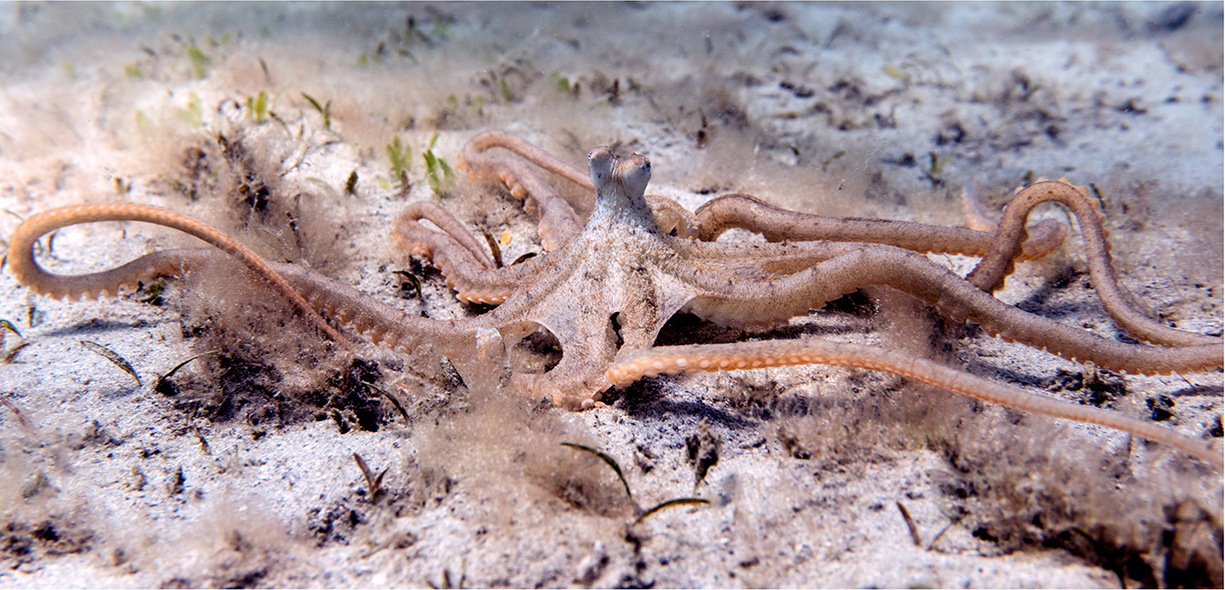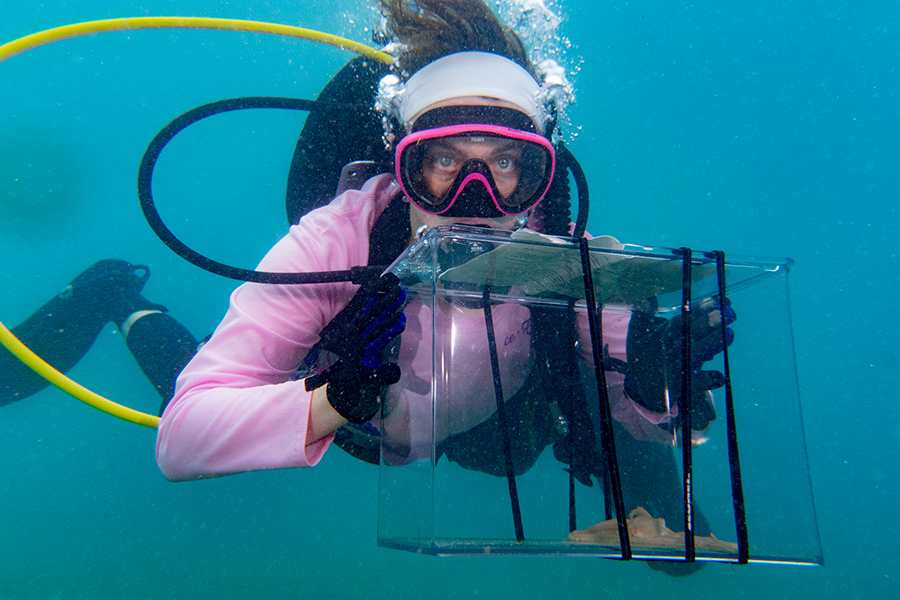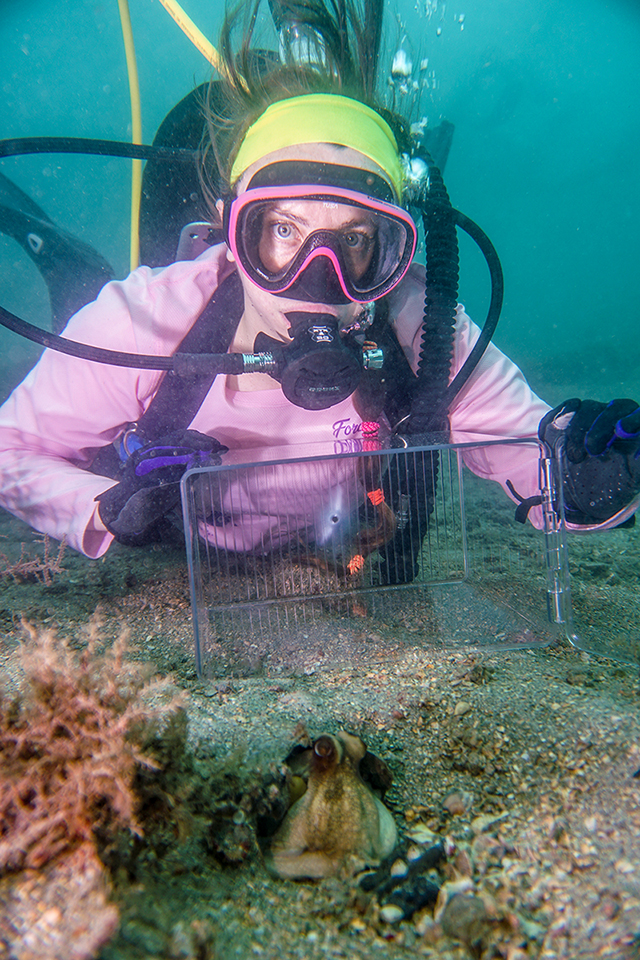
Author: Colleen Hecker
Date: October 10, 2023
Trolls aren’t the only creatures living under bridges this Halloween! Nestled in South Florida’s Lake Worth Lagoon is a living jewel of biodiversity under a 65-foot-high roadway called the Blue Heron Bridge. Beneath the bridge is the internationally famous Phil Foster Park where a colorful assortment of marine animals swim, including my focus of study – octopuses! Outfitted in my SCUBA costume, I navigate through the octopuses’ neighborhood, swimming from one octopus den to the next, seeking these 8-armed masters-of-disguise for my master’s thesis studies. Come to think of it, this fieldwork is a lot like trick-or-treating, complete with hilarious octopus hijinks and spooky octopus costumes.
To find highly camouflaged octopuses, I scan the sandy plains for the tell-tale sign of their eyes, perched high on their head. These cunning animals have not only mastered camouflage by blending into their background environment, but the art of vanishing, too. Beneath a sunken pipe, I once spotted two rectangular pupils of an Atlantic longarm octopus peering up at me – trick or treat! I set to work trying to coax it into my container. In a flash, those stalked eyes disappeared below the sandy substrate. Out of sight and out of reach, the octopus under the pipe certainly tricked me – no data today!
Darting below the lagoon’s sandy bottom isn’t the only way octopuses disappear. Another trick up their eight sleeves is vanishing behind a plume of black ink. Like the Halloween prank of spraying cans of silly string, octopuses fire off clouds of ink (a potion of mucus and pigment) to confuse their predators. Finding myself on the receiving end of a common octopus’ inky cloud, I froze in a befuddled state. My dive buddy had the wherewithal to fan her hand through the water to disperse the slimy stuff, and we encouraged the culprit to swim into my container; a data point recorded.

Atlantic longarm octopus (Macrotritopus defilippi) inside a collection container, photo credit: Chelsea Bennice
Of course, half the fun of trick-or-treating is in the costumes we wear to prowl the neighborhood in search of treats (or, in this case, octopuses). My SCUBA get-up pales in comparison to the expert camouflage of octopuses. The spookiest octo-costume I’ve seen was a ghostly display by an Atlantic longarm octopus. Darting up through the water column with its eight arms spread wide, the small octopus flashed white as a sheet with a dark ring around each eye, hovering above my head like an apparition. This behavior is a threat or startle display – I think we both were spooked. One thing’s for sure, I wouldn’t like my chances in a costume contest against that octopus!
The objectives of trick-or-treating are simple enough to understand – put on your best costume, act the part, and collect the sweet treats! So, what’s been the point of trick-or-treating for octopuses? My master’s thesis research is using genetics and morphology (body structures) to accurately identify octopus species. Octopus species are widely misidentified in fisheries, which is a big problem for effective fisheries management. My research will help prevent future cases of mistaken identity in the fisheries sector.
Octopuses are most abundant at Phil Foster Park in the spring, so my trick-or-treating season has passed. That doesn’t mean my research has come to a stop. Instead, I am focusing on other aspects of my project, such as genetic analyses in the laboratory. These lab-based methods, away from the beauty of the Lake Worth Lagoon, are perhaps the spookiest parts of research for a field-loving biologist like me.
Research conducted under FFWCC SAL # 20-2247C-SR and IACUC Protocol A22-43

Ready to collect a common octopus (Octopus vulgaris), photo credit: Chelsea Bennice